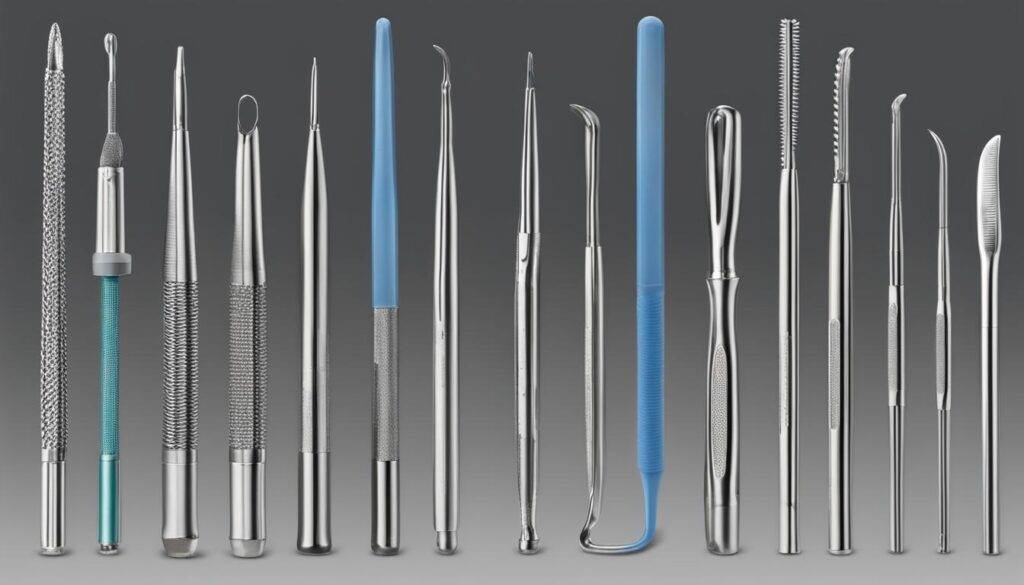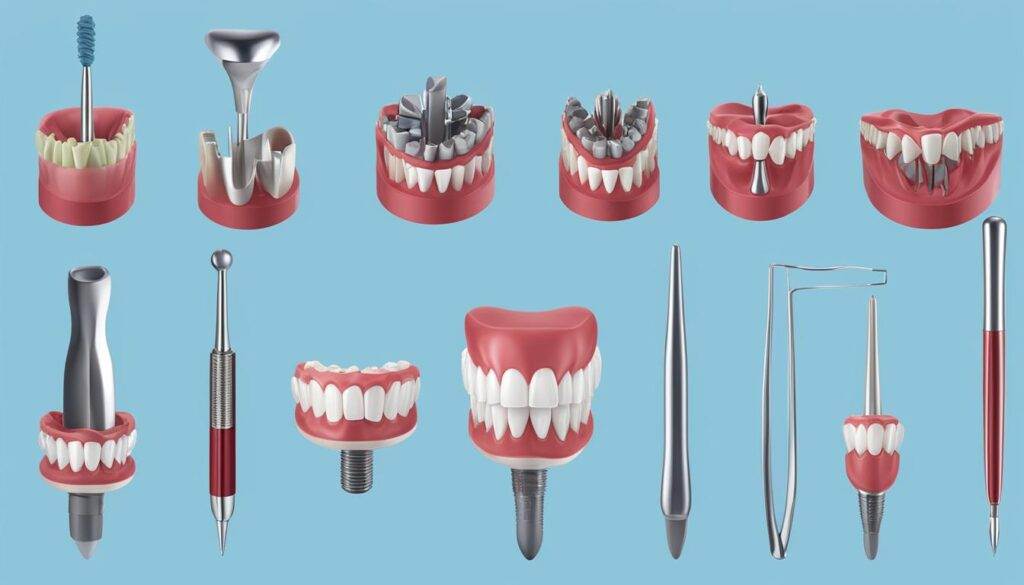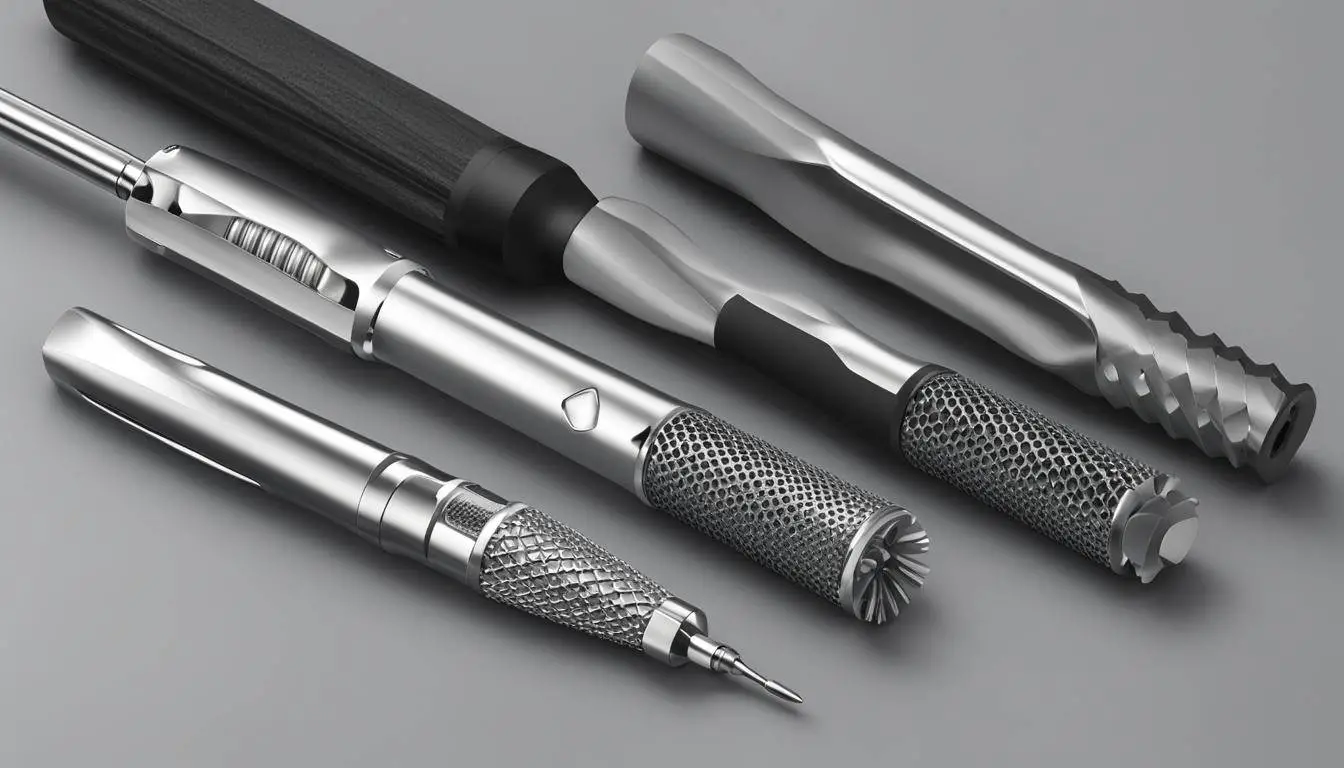Understand the various types of hand scalers in dentistry, focusing on their application in root planing and scaling procedures for optimal oral health. Gain insights into the specialized dental instruments that are crucial for dental professionals and hygienists.
Understanding the Essential Role of Hand Scalers in Dentistry
What are Hand Scalers and Why are They Important?
Hand scalers are important tools in dentistry, mainly used for getting rid of calculus and plaque from teeth surfaces. These instruments help with scaling and root planing, which are key for keeping gums healthy. By allowing dentists and dental hygienists to clean tooth surfaces carefully, hand scalers can reach spots that might be tough to get to with other tools.
There are different types of hand scalers designed for specific tasks. You might hear about sickle scalers, curettes, and universal curettes. Each type has its own benefits depending on what the dentist needs to do. For example, hand scalers give a sense of touch—this means practitioners can feel the texture of teeth better than they could with machines.
Advantages and Disadvantages of Using Hand Scalers
Using hand scalers comes with some good points. They let dentists target specific areas around the gum line where plaque usually builds up. Plus, their ergonomic designs can make them easier to use for long periods without causing strain. The stainless steel used in these tools is also strong and lasts a long time.
But there are some downsides too. The manual work involved can tire out practitioners during longer procedures. Also, if not used properly, patients might feel discomfort.
Benefits and Limitations of Incorporating Hand Scalers into Dental Procedures
Adding hand scalers into dental procedures has many benefits that lead to better patient care. They help ensure thorough cleaning techniques that support good oral hygiene. Dentists have more control over their movements when using them, which is super important when working around sensitive areas like gums or restorations.
On the flip side, using hand instruments often takes more time than powered devices like ultrasonic or sonic scalers do. Some dentists may find it hard to keep steady pressure while working without causing pain or missing spots that need attention.
In short, while hand scalers are essential tools in dentistry due to their precision and control, knowing their pros and cons is key for effective use in practice.
Exploring Different Types of Hand Scalers- A Comprehensive Guide
Gracey Curettes- The Scalers for Graceful Scaling
Gracey curettes are special hand scalers that help a lot in scaling and root planing. They have a curved blade that’s angled just right, which makes it easier to reach root surfaces and clean out periodontal pockets. You can find these tools in different designs made for various parts of the mouth, like the front (anterior) and back (posterior) teeth.
- Description and Design: The unique angle of Gracey curettes helps them remove calculus effectively from tooth surfaces. This is super important during periodontal therapy.
- Applications: They’re great at fitting around the shapes of teeth, making them perfect for detailed cleaning work.
- Types: There are universal Gracey curettes that work on all surfaces, plus area-specific ones designed just for either anterior or posterior teeth.
Universal Curettes- Versatile Scalers for All Surfaces
Universal curettes are handy tools that can be used on any part of a tooth. Their design allows dental pros to easily get rid of plaque and calculus from both above (supragingival) and below (subgingival) the gum line.
- Characteristics: These scalers usually have a rounded tip and a wider blade compared to other types, making them good for many tasks.
- Advantages: They make scaling easier because one tool can do it all across different surfaces, saving time during procedures.
- Indications: Universal curettes work well for general scaling where precision is needed but not as critical as with area-specific instruments.
Sickle Scalers- Precision Instruments for Deep Scaling
Sickle scalers have pointed tips that make them really good at removing heavy calculus deposits from tooth surfaces.
- Anatomy: The sharp edges let sickle scalers grab onto tough deposits easily, ensuring thorough cleaning.
- Applications: While they’re best for supragingival scaling, they can also be used below the gum line when needed.
- Techniques: Using the right angle and stroke technique is key to reducing any harm to gums while getting rid of deposits efficiently.
Choosing the Right Hand Scaler
When picking hand scalers for your practice, there are some things you should keep in mind:
- Material Quality: Go for stainless steel options since they last longer and resist rusting. This means you won’t have to replace them often.
- Ergonomic Design: Look for handles that feel comfortable during long use; this helps keep your hands from getting tired.
- Type of Procedure: Think about whether you need universal or area-specific tools based on what your patients need. Knowing what works best will help improve treatment results.
By learning about these different types of hand scalers and how they work, dental professionals can do a better job keeping mouths healthy through effective scaling techniques.

Step-by-Step Guide to Hand Scaling Techniques in Dentistry
Preparation and Patient Education- Setting the Stage for Successful Scaling
Getting ready for hand scaling is super important for both the dental team and the patient. It starts with a thorough patient assessment. This means looking at the patient’s medical history and their current oral health. Knowing this helps catch any problems that might pop up during scaling.
Effective communication is key here. Dental professionals should take time to explain what will happen during the procedure. This can help ease any worries or fears patients may have, making them feel more comfortable.
It’s also a good idea to educate patients about their periodontal health. Talking about how important it is to keep up with good oral hygiene sets a strong base for successful scaling. Plus, reminding them about regular dental appointments ensures that any issues are caught early.
Scaling Strokes- Mastering the Art of Removing Calculus Effectively
Once everything’s set, it’s time to focus on mastering different scaling procedures for effective calculus removal. Dental professionals need to know various strokes—like vertical, horizontal, and oblique—that are suited for different parts of the mouth.
Choosing the right calculus removal tools is really important too. Using the right instruments makes it easier and more comfortable for patients. Applying just the right amount of pressure is essential; using lighter pressure on sensitive areas can make a big difference in comfort during treatment.
Understanding how to use angulations for optimal scaling helps as well. By adjusting angles properly, dental professionals can work more efficiently while keeping discomfort low, leading to better results overall.
Finishing Touches- Polishing and Maintaining Healthy Gums
After scaling, it’s time for those finishing touches that help keep tooth surfaces smooth and gums healthy. Polishing teeth not only gets rid of leftover plaque but also gives them a nice shine.
After polishing, it’s crucial to talk about post-scaling procedures so patients know how to care for their teeth at home. Discussing why regular check-ups are necessary helps prevent gum disease by catching issues before they get worse.
Dental professionals should also introduce helpful gum disease treatment tools, explaining how these can aid in daily oral care routines. This approach supports long-term periodontal health and encourages patients to take charge of their oral hygiene between visits.
Optimizing Hand Scaling Practices- Tips and Best Practices for Dental Professionals
Ergonomic Considerations for Hand Scalers- Reducing Strain and Fatigue
When using hand scalers in dentistry, keeping comfort in mind is super important. Good posture helps a lot; dental professionals should aim for a neutral wrist position to avoid strain. Choosing ergonomic dental instruments with comfy grips can really cut down on hand fatigue during long procedures.
Lightweight dental scalers are great because they lessen the effort needed for extended use. Picking tools with a handle designed for a firm grip without causing discomfort can make scaling easier. This not only boosts the quality of your work but also helps prevent injuries from repetitive motions, keeping your practice running smoothly.
Enhancing Efficiency with Ultrasonic Scalers- A Modern Approach
Ultrasonic scalers are a modern way to clean teeth that works well alongside traditional hand scaling methods. These tools use high-frequency vibrations to break down calculus and plaque effectively. The benefits of ultrasonic scalers include saving time during scaling and making patients more comfortable since less manual pressure is applied.
However, they do have some downsides, like needing specific training to use them properly. It’s key for practitioners to know when to add ultrasonic scalers into their routine—especially when dealing with heavy calculus or prioritizing patient comfort. Often, using both ultrasonic and hand scaling techniques together leads to the best results for oral health.
Best Practices for Hand Scaling Techniques
To get the most out of hand scalers in clinical settings, sticking to best practices is crucial. Regular maintenance of dental instruments is essential; this means cleaning and sterilizing them thoroughly after each use to avoid cross-contamination. Keeping tools sharp ensures effective scaling during procedures.
Practioners should also learn about different scaling procedures tailored for various tooth surfaces (like anterior vs posterior teeth) as well as conditions such as subgingival versus supragingival scaling. Following these best practices not only enhances outcomes but also supports overall periodontal health among patients.

Future Advancements and Innovations in Hand Scaling Technology
Novel Scaler Designs for Improved Ergonomics and Efficiency
The design of hand scalers has changed a lot to make them more comfortable and efficient for dental professionals. Modern ergonomic dental instruments focus on user comfort, helping to reduce strain during long procedures. These ergonomic scaler designs have handles that fit better in the hand, which is key to lowering the risk of repetitive strain injuries.
Using innovative materials like lightweight stainless steel helps create durable yet easy-to-handle instruments. This shift toward lightweight dental instruments is important for reducing hand fatigue, a common problem among dentists. Many high-quality scalers now include features like soft grips and well-balanced designs, ensuring comfort during extended use. As research continues into better tool designs, we can expect even more advancements that keep both clinician comfort and patient safety in mind.
Laser Scaling- A Promising Technology for Minimally Invasive Dentistry
Laser scaling is changing the game in dentistry by providing a minimally invasive option compared to traditional hand scaling methods. This technology uses focused light energy to effectively remove calculus while also helping the surrounding gum tissue heal.
One major benefit of laser scaling is that it reduces discomfort for patients when compared to regular techniques. The process also leads to less bleeding during procedures, which makes the experience better overall for patients. Plus, lasers can specifically target areas without harming healthy tissue, making them especially useful for sensitive cases.
However, it’s important to remember that laser scaling might not work for everyone or every situation. Dental professionals need to carefully think about the advantages and limitations before adding laser technology into their practice. Proper training on how to use this equipment is key to maximizing its effectiveness while keeping patients safe.
Research and Development of Advanced Scaler Designs
Research and development in dentistry are leading to new scaler designs that improve both functionality and durability. Manufacturers are focusing on using excellent material quality that boosts performance while ensuring tools last longer.
New technologies are being explored to create scalers that need less maintenance without losing efficiency or effectiveness. For example, advancements in coating materials make scalers more resistant to wear and corrosion, extending their lifespan significantly.
As new materials come out along with innovative manufacturing processes—like 3D printing—dental professionals can look forward to a wider range of options made specifically for different clinical needs. Staying updated on these changes will help practitioners choose the best professional dental tools available.
Future advancements in hand scaling technology offer exciting possibilities for both dentists and patients alike. From ergonomic designs aimed at improving user comfort to advanced laser technologies that reduce invasiveness during procedures—the evolution continues toward better oral health care delivery.
By keeping up with innovations such as novel scaler designs or laser applications in dentistry—and understanding what they mean—dental professionals can provide top-quality care while promoting effective periodontal health practices among their patients.

